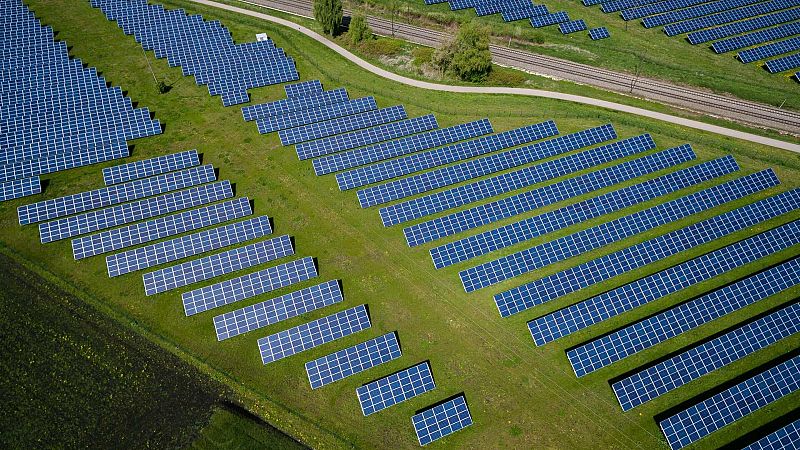
In an historic first, solar power generated more electricity than any other source in the EU last month.
New data from energy think tank Ember shows that solar accounted for 22.1 per cent of the EU’s electricity mix in June 2025, narrowly overtaking nuclear – and, notably, far outpacing fossil fuels.
At least 13 member states hit monthly solar power records, including the Netherlands (40.5 per cent) and Greece (35.1 per cent), thanks to a surge in capacity and a stretch of sunny weather.
The shift also helped the EU manage a spike in energy demand driven by the early-summer heatwaves that continue to batter the continent.
“Europe is becoming a solar powerhouse,” says Ember energy analyst Chris Rosslowe.
European countries achieve record low coal electricity levels
As solar has soared, Europe’s reliance on coal has plummeted.
Just 6.1 per cent of EU electricity came from coal, down from 8.8 per cent a year earlier and its lowest monthly level on record.
Germany and Poland, which together account for the majority of the EU’s coal use, both saw record lows. Germany generated only 12.4 per cent of its power from coal, while Poland’s energy mix still featured a large amount of it – 42.9 per cent overall.
Other countries including Czechia (17.9 per cent), Bulgaria (16.7 per cent) and Denmark (3.3 per cent) also hit new lows.
Ten EU states didn’t use coal power at all, including Ireland, which officially shut its last coal plant on 20 June. Spain and Slovakia plan to phase out coal in 2025, too.
Meanwhile, at least 13 EU nations marked their highest-ever share of solar power. These included Belgium, Croatia, France, Hungary, Italy, Portugal and Slovakia.
Collectively, the data holds promise for Europe’s energy transition - pointing to a summer shaped less by fossil fuels and more by the sun.
Public support for green energy remains strong
Europe can partly credit its solar success to overwhelming public support for renewable energy sources, especially when they offer visible economic benefits.
The European Commission reports that almost nine in ten Europeans support the EU taking action to increase renewable energy.
In many countries, rooftop solar, cheaper bills and independence from volatile fossil fuel markets are resonating with younger and more climate-aware consumers, too.
Research shows that community energy schemes offering discounts, shared ownership or local job creation win consistent backing from European residents. Projects that engage communities early and share financial gains are also more likely to succeed long term.
They have been a boon to solar capacity, too. Solar capacity is surging in Europe, helping to accelerate its shift away from fossil fuels.
In 2008, just 1 per cent of Europe’s renewable energy mix came from solar power. In 2023, solar made up 20.5 per cent of that output, according to the Commission.
“Non-stop records are not just the result of sunny weather, but also from new solar being built every year,” Rosslowe explains.
The solar opportunity is just beginning
While last month’s milestone was significant, analysts say it’s only a glimpse of what’s possible.
A recent study by the Global Energy Monitor revealed that converting closed coal mines into solar farms could generate enough electricity to power a country the size of Germany. Across Europe, more than 1.2 million hectares of former coal sites could be repurposed for clean energy, according to the San Francisco-based watchdog.
It’s not just solar that is driving Europe’s energy transition. Wind power accounted for nearly 16 per cent of EU electricity in both May and June, according to Ember’s analysis – the highest-ever share for those months.
Despite Europe’s record-breaking green energy gains, fossil fuels still made up about a quarter of the EU’s electricity in June. That’s far below previous years, but it still highlights the challenges ahead, especially during the times of day or different seasons when solar and wind output dip.
Experts say more storage, smarter grids and better demand-side planning will be crucial to breaking new records and pushing fossil fuels further out of the system.
“Low-cost renewables are already helping to get Europe’s energy system off the rollercoaster of fossil energy prices,” says Rosslowe.
“The next big opportunity comes from adding battery storage and flexibility to extend the use of renewable power into mornings and evenings, where fossil fuels still set high power prices.”







